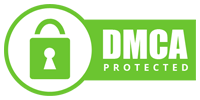
Hey there! Ever wondered how amazing apps and software come to life? It’s not just magic (although the result can feel that way). Business analysts play a critical role in translating brilliant ideas into clear instructions that developers can use to build awesome products especially those offered at zen8labs.
In this blog, we’ll crack open the treasure chest of business analyst knowledge. We’ll explore the essential methods and tools you need to gather and manage requirements like a pro, analyze them like a detective, and manage them like a master organizer. So, grab a cup of coffee (or your favorite beverage), and let’s dive in!
1. Gathering requirements
1.1 Collecting methods
Business analysts employ a variety of methods to collect user needs, including:
- Interviews: Direct conversations with stakeholders allow BAs to delve deeper into user needs and expectations.
- Questionnaires: Structured surveys can gather data from a wider audience, providing valuable insights into user preferences.
- Workshops: Interactive sessions facilitate collaborative brainstorming and requirement definition with stakeholders.
- Observation: Observing users in their natural environment can reveal valuable insights into existing workflows and pain points.
1.2 Gap analysis
Following data collection, BAs conduct a gap analysis. This analysis compares the current state (as-is) with the desired future state (to-be) of the system. It identifies areas where the current system falls short and helps prioritize the most critical functionalities for the new system.
Example
Developing a work management application requires the BA to understand existing task management processes. Interviews with office staff might reveal a need for features like creating and tracking tasks, setting reminders, and reporting progress.
1.3 Requirement analysis
After gathering requirements, BAs perform a high-level and detailed analysis (use cases and user stories) and then delving into a detailed analysis. This includes:
- Prioritization: BAs collaborate with stakeholders to prioritize requirements based on their importance and impact.
- Business flow definition: Agreement on the product’s overall business flow is crucial before proceeding. This flow serves as the foundation for subsequent requirements.
- Modeling: Once the requirements analysis is complete and the end users are identified, Techniques like tables and diagrams help BAs visualize the requirements. Tables excel at presenting complex data with a clear structure, while diagrams are valuable for depicting intricate relationships that are difficult to express textually.
By focusing on identifying essential information, distinguishing between current and desired states, and ensuring clear communication, BAs effectively capture and document user needs.

Examples of modeling techniques:
- Tables: User permission tables, stakeholder information tables, decision tables.
- Diagrams: These provide visual representations of user interactions, system components, and data flows.

This approach fosters a transparent and collaborative process, ensuring that the final system meets user needs and business objectives.
1.4 Verification and confirmation of requirements
This is a crucial step in the process of building business requirements. The BA needs to verify and confirm the requirements with stakeholders to ensure their accuracy and alignment with actual needs.
An example is provided to illustrate this concept. After gathering and analyzing requirements for a human resource management system, the BA might organize a meeting with stakeholders to confirm that the requirements regarding employee record management, timekeeping, and payroll have been accurately captured and are complete.
1.5 Requirement management
Managing requirements is an ongoing process. The BA needs to track, update, and manage changes to requirements.
The document uses an example of developing a mobile application to illustrate this concept. In this case, the user interface (UI) requirements might change based on feedback from beta testing. The BA would be responsible for updating the requirements document, communicating these changes to the development team so they can adjust accordingly, and reflecting the timeline for these changes to ensure the project schedule stays on track.
2. From brainstorm to blueprint: Powerful tools and techniques for BAs
Despite living in a digital age, not everything requires the use of technology, and using tools in the wrong way can be quite dangerous. There are times when we still need to rely on traditional, manual methods, especially when drawing flows. It’s advisable to sketch your flow in a notebook first to identify any additional steps that might be necessary. Once everything looks fine, you can use a tool to formalize the process. Using pen and paper helps you focus entirely on analyzing the process, identifying key steps and their relationships. Conversely, using a tool can shift your focus to the tool itself, adjusting it to fit, and making edits can be time-consuming. Once you have a good understanding of the process and the relationships between steps, you can use tools to visualize your analysis.

2.1 UML (Unified Modeling Language)
UML helps BAs create diagrams to illustrate and analyze system requirements. For example, class diagrams can describe a student management system’s data structure.
2.2 User Stories
User stories are useful in Agile environments, describing requirements concisely and understandably. For example, in a project management software development project, a user story might be: “As a project manager, I want to create tasks and assign them to team members to track progress
2.3 Use Case
Cases help BAs identify and document requirements from the user’s perspective. For example, in a hotel management system, a use case can describe the steps a customer takes to book a room online.
- Guidelines for writing effective use cases for business analysts: Writing use cases is a critical method in analyzing and communicating software requirements. Use cases help describe and understand the interactions between users and the system to achieve specific goals. This article provides guidelines for writing effective use cases for business analysts and presents some common use case templates.
- Importance of writing use cases: Have you ever wondered why writing use cases is essential? Writing use cases plays a crucial role in clearly defining what the software needs to accomplish and supporting effective communication of requirements. Use cases help both business and technical teams understand and provide feedback effectively. For business analysts, use cases facilitate the communication of technical requirements with the development team. For technical personnel, use cases help communicate with stakeholders, fostering the involvement of business factors. Thus, use cases serve as a common language to bridge gaps and connect everyone.
- What is a use case? A use case describes the interaction between users and the system to achieve a specific goal. Use cases focus on how users interact with the system and consist of a sequence of interaction steps. They are presented in the form of a basic flow and can include alternative and exception flows. For example, a use case for “Online Book Purchase”:
– Use case name: Online Book Purchase
– Brief description: The use case begins when a user shows interest in a book available online and ends when the user completes the purchase.
– Actors:
+ User: The person who wants to buy the book online.
+ System: The book and payment management system.
– Details: The use case includes all exception cases and variations, such as what happens if the user enters an invalid email address or incorrect credit card information. - How to write effective use cases:
– Name the use case: The name should reflect the primary goal of the interaction and briefly describe the user’s action. For example, “Purchase Course”.
– Write a brief description: A concise description helps readers understand the goal and scope of the use case. For instance, the use case starts when the user shows interest in a course and ends when the user completes the purchase.
– Identify actors: Actors are entities involved in the use case. In the course purchase example, the user and the course and payment management system are the actors.
– Define preconditions: Preconditions are conditions that must be met before the use case begins.
– Write the basic flow: Outline a sequence of steps that describe typical user and system interactions to achieve the goal. The basic flow should cover all standard steps a user takes to purchase a course.
Example of basic flow for course purchase:
+ The user views available courses.
+ The user selects a specific course.
+ The system displays detailed information about the course.
+ The user reviews the details and decides to purchase the course.
+ The system requests the user’s payment information.
+ The user provides payment information.
+ The system confirms the payment and grants access to the course.
+ The use case ends.
– Write alternative flows: Sometimes users may take different actions, or the system may encounter special scenarios. Writing alternative flows details these interactions and handling methods.
+ Example: User cannot find the desired course:
– The user searches again.
– The user decides not to purchase and exits the use case.
+ Example: User does not complete the payment:
– The user cancels the payment.
– The system cancels the course purchase.
– Write exception flows: Sometimes, exceptional situations occur during interactions. Writing exception flows describes handling these scenarios optimally.
Example: System error during payment processing: The system displays an error message and asks the user to try again or contact support. 3
3. Overcoming common challenges: Effective solutions for Business Analysts
3.1 Communication and understanding
One of the biggest challenges is effective communication and understanding between stakeholders. To address this, BAs need strong communication skills, active listening, and the ability to recognize and resolve conflicts. For example, if there is a disagreement on requirements between departments, a BA can organize group meetings to discuss and find a consensus solution.
3.2 Managing requirement changes
Another challenge is managing changes in requirements throughout the project lifecycle. To handle this, BAs can use requirement management tools like Jira, Clickup, or Notion to track and update changes efficiently, ensuring all stakeholders are informed and agree with the new adjustments.
3.3 Premature detailing
A common mistake is trying to detail everything from the start, especially in new domains. It’s almost impossible to get it right the first time, and it can waste a lot of time. Even if you have experience from another company, it may not be suitable for the current organization. Therefore, it is better to complete a rough outline of the processes and have stakeholders review and refine it gradually.
3.4 Mentorship
If you are new to the BA role, it’s highly beneficial to find a good mentor who can support and review your work before presenting it to others to avoid simple mistakes.
3.5 Personal experience insights
Based on my recent discussions with several BAs, I’ve noticed a tendency to dive into details too early. This seems to be a common mistake among many BAs. When advised to focus on the big picture first, they often respond, “I understand, but I don’t have the time.” I used to have similar reasons, but now I ensure that my analysis (both drafts and final documents) always starts with the big picture before moving to details. Documents are not only for personal use but also for various stakeholders, and without a broad overview, they won’t understand the details. Analyzing from a high-level perspective helps provide a complete picture of the system, which aids in subsequent detailed analysis.

3.6 Causes of poor requirement gathering
- Asking the wrong person: BAs need to identify the right individuals to ask for requirements, ensuring they have the necessary information and authority.
- Focusing on solutions, not problems: BAs should understand the actual problems of the business instead of applying solutions from elsewhere that may not fit.
- Users providing solutions instead of requirements: BAs should guide users to focus on their needs and real issues, not lead them with their proposed solutions.
- Lack of domain knowledge: BAs should have in-depth knowledge of the business domain relevant to the project.
- Inadequate questioning skills: Asking the right and effective questions is crucial for accurately gathering requirements.
- Gathering requirements from a single person: BAs should collect requirements from multiple stakeholders for a comprehensive and accurate view.
- Incomplete information from users: BAs need to build trust with users to make them comfortable sharing all necessary information.
- Users unsure of what to say: BAs should ask specific questions to help users provide sufficient information.
- Scope management issues: BAs need to manage project scope and decline out-of-scope requirements to prevent scope creep.
- Unclear user requirements: BAs should help users clearly define their requirements by thoroughly understanding and suggesting solutions.
3.7 How to turn challenges into opportunities?
- Asking the right person: Identify individuals with the required information and authority for providing requirements.
- Focusing on problems: Concentrate on the real problems of the business instead of adopting external solutions.
- Guiding users on requirements: Help users focus on their needs and actual issues.
- Acquiring domain knowledge: Continuously learn and understand the business domain relevant to the project.
- Developing questioning skills: Learn and practice effective questioning techniques.
- Collecting requirements from multiple sources: Engage multiple stakeholders to gather a well-rounded set of requirements.
- Building trust with users: Develop trust to make users comfortable sharing comprehensive information.
- Asking specific questions: Use targeted questions to elicit the necessary details from users.
- Managing scope: Control the project scope and reject out-of-scope requirements to avoid scope creep.
- Clarifying user requirements: Thoroughly understand user ideas and suggest solutions to help them clearly define their requirements.
3.8 Here are some common questions for business requirements analysis
- What is the problem?
- Has there been a business solution to this problem?
- What are the risks associated with this problem?
- What are the impacts if the problem is not resolved or delayed?
- Are there any business constraints?
- Who is responsible for this issue?
- When does this problem occur and how often?
3.9 Specific questions for different roles
Manager:
- What issues are currently affecting the company/department?
- How do these issues impact the company’s operations?
- What risks arise if these issues are not addressed?
- When do these issues occur and how frequently?
- Are there any temporary measures to mitigate these issues?
Stakeholders related to organizational processes:
- What information do you need/receive from other departments to perform this task (input)? What are the specific details of this information?
- What steps do you take to complete this task (process)?
- Who will continue the work after you complete your part (output)?
- If others can perform this task, do they follow the same steps as you? If not, what are the differences?
- What problems do you see in the current workflow, and what are the causes?
- What reporting data do you use to complete this task, and can you show specific data in the reports (mainly requesting specific fields)?
- Do you have any guidelines or checklists related to this task?
- Do you use any templates during the steps?
Conclusion
In conclusion, requirements analysis and management are a complex but crucial process that requires BAs to have extensive knowledge and strong soft skills. Mastering and correctly applying the appropriate techniques and tools will help BAs create real value for the business and ensure project success. If you want the success similar to a BA, then read our zen8labs’ blog!
Nguyen Van Anh, Business Analyst





